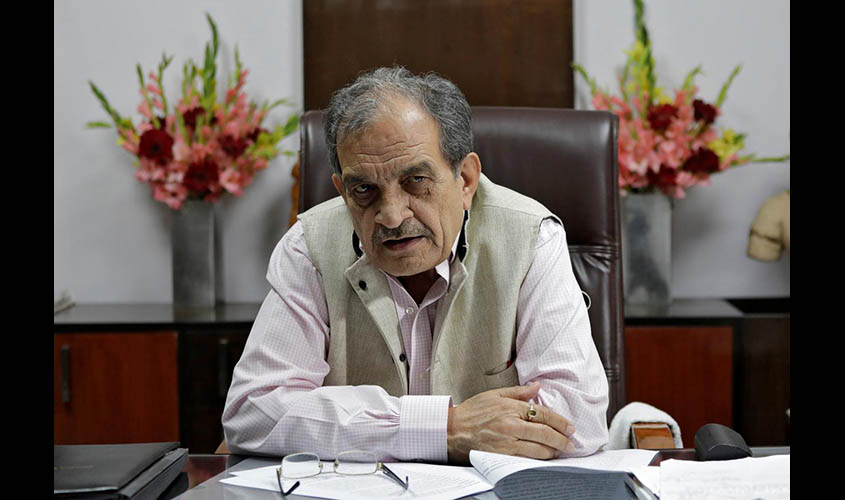Aim is to raise production to 300 MT by 2031 from 100 MT now: Minister of Steel.
For the Indian steel sector, 2017 was a milestone year, as crude steel production crossed 100 million tonnes (MT) for the first time, bringing India close to Japan, the second largest steel producer in the world after China. Earlier, India attained the third position by leaving behind US in 2015. The Union Ministry of Steel, headed by Chaudhary Birender Singh, aims to increase the production to 300 MT by 2031. In an e-mailed interview to The Sunday Guardian, Singh talked in detail about the achievements of the Indian steel sector in the last four years and its future. Excerpts:
Q: What are the major achievements of the Ministry of Steel in the last four years?
A: The steel industry was in dire straits and struggling for survival in 2014 and a series of bold and timely initiatives by our government led to resurgence and revival of the Indian steel sector. India is all set to become the world’s second largest steel producer in 2018, leaving behind Japan. Earlier, we attained the third position by leaving behind US in 2015. The Indian steel sector has been growing at a steady Compounded Annual Growth Rate (CAGR) of about 5% over the past four years. Crude steel capacity in the country has increased from 102 MT in 2013-2014 to 134 MT in 2017-2018. Production of crude steel has also increased from 81 MT in FY 2014 to 102.19 MT in the same period. Per capita consumption of finished steel has increased from 58 kg in 2014 to 65 kg in 2017. Exports of steel increased from 4.1 million tonnes in 2015-2016 to 9.6 million tonnes in 2017-2018.
Q: What are the policy initiatives taken by the government?
A: Last year
Q: How do you see the ongoing NPA resolution process, with existing companies acquiring these assets, and its likely impact on capacity expansion?
A: As you know, the steel sector is leading the resolution tally as far as NPA issue is concerned. It has strengthened the revival by giving a new life to steel companies which were burdened with loans and debts. Consolidation will help in economies of scale and better synergies. New managements with rich experience of manufacturing operations would rejuvenate and give a new direction to companies which were branded as bad assets. All this would lead to better competitiveness, cost-effectiveness, quality enhancement, distribution and logistics improvement and customer orientation. International companies will bring international expertise, resources, markets and technologies. These proceedings will provide suitable relief to domestic steel players in terms of ease in availability of credit from banks in future.
As existing players are taking over the assets, instead of pure-play investors with no background in steel or related fields, the revival of these companies would be faster. Steel companies with core competence in the field can add better value and lead to a healthy steel industry as a whole in the country. Impact on capacity expansion will be positive as the steel industry gets healthier and stronger. Consumption of steel is increasing in India and is likely to gather more momentum as around Rs 6 lakh crore investments on infrastructure planned in the budget are being made.
Q: Recently, US imposed tariffs on China and China retaliated. India is looking at increasing steel exports in the coming years. What impact can this trade war have on India’s exports?
A: You are right, tariff imposition has raised fears of a trade war as many of the European and Asian countries like China, Korea and Japan have hinted at imposing or already imposed tariffs in retaliation. US tariffs on Indian imports will not have any substantial impact as India’s share of US steel imports is very small compared to other countries. But there could be some indirect impact. It will trigger major shifts in existing trade flows of steel and steel products globally. The countries which are currently exporting to the US will be forced to look at other major steel consuming markets like India to sell their surplus and this is likely to distort our domestic markets considerably. Also, since exports of iron and steel products are expected to be rerouted to other markets, prices will remain under pressure which will affect the realisation of companies. However, our government is vigilant about the market dynamics and would take proactive trade remedial measures, if required.
Q: How is the Steel Research & Technology Mission of India (SRTMI) contributing towards research and development related to steel and associated sectors in India?
A: The government has established SRTMI to spearhead R&D of national importance in iron and steel. Its prime objective will be to work for creating state-of-the-art facilities to conduct cutting-edge research, develop expertise and skill development, manage human resources and bolster a tripartite synergy among industry, national R&D laboratories and academic institutes. It will be an umbrella body that will bring academia, industry and other stakeholders on a common platform as far as steel-related R&D in India is concerned. SRTMI will enable domestic manufacturers to collaborate and upscale their capability to manufacture sophisticated products using technology at par with Japan and other countries in times to come.
Q: What steps have been taken to ensure quality control?
A: Over 86% steel products in the country are covered under Quality Control Orders. These prohibit production and import of substandard steel products. The Ministry of Steel is working towards 100% quality regime in the steel sector.

